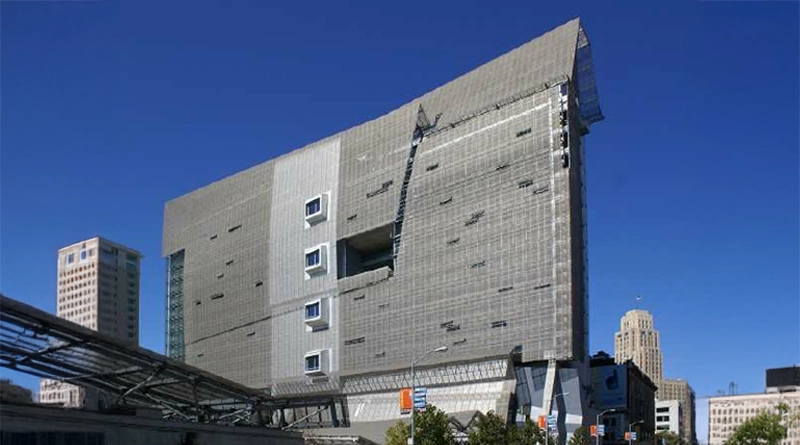Last updated on: January 9, 2025
Table of Contents
- The Evolution of BIM in Federal Facility Operations
- Operational Excellence Through Digital Integration
- Advanced Applications in Federal Facility Management
- Real-World Impact – Portfolio Analysis
- 550 C Street, Washington, D.C.
- San Francisco Federal Building
- Navigating Implementation Challenges
- Simplify GSA BIM Adoption
- COBie Integration and Services
- The Future Landscape of Federal Facility Management
- Wrapping it Up
The General Services Administration (GSA) is pioneering a digital transformation in federal facility management through new-age Building Information Modeling (BIM) technology. As the largest property owner in the United States, the GSA is setting a new standard for infrastructure management by leveraging BIM’s comprehensive capabilities beyond traditional 3D visualization.
The reason for this is GSA is implementing BIM technology to streamline the entire lifecycle of a government facility, from design and construction to operation and decommissioning. This technology enables more efficient and cost-effective management of government facilities infrastructure.
The Evolution of BIM in Federal Facility Operations
GSA BIM has emerged as the primary means of modern federal asset management, thus providing alignment among the design, construction, and operational stages of facilities. BIM gives facility managers instant and accurate building data which is accessible from a digital platform. The GSA BIM standards define a structure that guarantees uniformity in all federal projects, thus making it one smooth transition from Washington to Florida and Texas to Massachusetts.
Operational Excellence Through Digital Integration
The adoption of GSA BIM, specifically in the FM sector, brings massive changes, not only in the way building systems are managed but also in how they are monitored and maintained. Digital twins are the new norm for facility managers, allowing them to visualize real-time data on building performance, properly functioning tools, and maintenance times. Here, the power of data through the use of digital twins has been used to find proactive maintenance scheduling solutions which, in turn, cut back on downtimes and extend the life cycles of assets. The innovation seen in the use of computerized maintenance management systems (CMMS) has realized a higher percentage of projects paid by GSA projects, which will ensure the sustainability aspect.
GSA requirements allow only BIM protocols to compile specific details through which the seamless transmission of information among discrete building systems is made possible. This standardization had been of particular importance to companies operating in widely diverse geographical areas all over the world, as exemplified by the seismic design concerns in California and the high-rise issues in New York. The standard method ensures that facility managers can access and employ the necessary data for their building regardless of the project’s location or complexity.
Advanced Applications in Federal Facility Management
Using BIM for facility management applications is the main program of contemporary GSA projects. The technology allows owners or lessees to carry out analyses that would be difficult or impossible to do manually, such as space utilization, energy performance optimization, and predictive maintenance scheduling. For example, GSA’s use of BIM-based facility management in Washington State achieved a time savings of 31% for plant maintenance and also saw a drop of 27% in energy consumption.
Read About: How BIM is Facilitating Facility Management Process?
The combination of IoT sensors with the BIM platforms has actively created a self-regulating sensitive system that constantly monitors the building’s performance. Real-time data collection allows building managers to detect potential problems before they materialize, which results in decreased costs and increased occupant satisfaction. The GSA BIM Guide provides detailed protocols that must be met for advanced features to be implemented without flaws, thus ensuring consistent performance across all federal facilities.
Real-World Impact - Portfolio Analysis
550 C Street, Washington, D.C.

The GSA’s 550 C Street project in Washington, D.C., showcases the successful implementation of BIM for facility management. By leveraging BIM data, the facility management team achieved:
- 20% reduction in energy consumption
- 15% decrease in maintenance costs
- Improved space utilization and tenant satisfaction
The BIM model facilitated the process for the capturing and compilation of building data followed by developing a proactive, resource-efficient and data-based management system. The project shows solidly the advantages of BIM in adding to operational efficiency and sustainability.
San Francisco Federal Building

The GSA’s San Francisco Federal Building is another prime example of BIM’s effectiveness in facility management. By utilizing BIM, the facility management team:
- Optimized space utilization, resulting in a 30% increase in occupancy rates
- Streamlined maintenance processes, reducing downtime and extending asset life spans
- Improved tenant satisfaction through enhanced building performance and responsiveness
The BIM model furnished an all-around scope of the building’s equipment and building elements, thus making communication and collaboration among facility management teams the most efficient. This case study is a prime example of the effectiveness of BIM in improving the efficiency of operations and bringing value to stakeholders.
These Case studies and portfolio examples also reveal the revolutionary role of BIM in facility management apart from GSA projects. By adapting to BIM and using its strengths, facility managers can reach the highest degree of efficiency, sustainability, and performance and, at the same time, become the industry benchmark.
Navigating Implementation Challenges
Although GSA BIM standards provide a strong foundation, implementation challenges persist. The initial investment in technology infrastructure and staff training presents a major obstacle. However, ROI analysis across GSA projects demonstrates that these investments are typically recovered within 2-3 years through reduced operational costs and improved asset management.
System integration complexity and data standardization remain ongoing challenges. The GSA design-build process requires careful attention to BIM implementation during the construction phase to ensure a seamless transition to facility management operations. Organizations must develop comprehensive training programs and standard operating procedures to maximize the technology’s potential.
COBie Integration and Services
The GSA BIM implementation process is enhanced through proper Construction Operations Building Information Exchange (COBie) integration. Our comprehensive COBie services include:
- Systematic asset information collection and organization
- Custom COBie workflow development aligned with GSA standards
- Seamless facility data handover documentation
- Integration with existing facility management systems
- COBie data setup and validation
The Future Landscape of Federal Facility Management
Revolutionary technological developments are reshaping the future of GSA BIM deployment. Machine learning algorithms are being integrated with the BIM platforms to enhance predictive maintenance capabilities and automate routine facility management tasks. Advanced visualization technologies, including augmented and virtual reality, are enabling facility managers to interact with building systems in increasingly intuitive ways.
The GSA’s commitment to evolving BIM standards ensures that federal facilities remain at the forefront of technological innovation. Future developments will likely focus on enhanced cybersecurity protocols, improved data analytics capabilities, and greater integration with smart building technologies.
Wrapping it Up
The implementation of GSA BIM in facility management represents a fundamental shift from traditional federal building operations and maintenance. The technology’s ability to provide comprehensive building insights, enable proactive maintenance, and optimize resource allocation has proven invaluable across diverse geographical locations and building types.
As a leading provider of BIM implementation services, United-BIM brings extensive experience and proven expertise in GSA projects. Our track record includes successful implementations across multiple federal facilities, demonstrating our deep understanding of GSA BIM standards and requirements.
Looking to enhance your facility management capabilities? United-BIM can help transform your next GSA project. Our team of experts understands the unique challenges of federal facility management and can guide you through every step of the BIM implementation process.
About the Author

Coordination Manager / VDC Manager at United BIM
With over 10 years of experience in the AEC industry, Akash Patel is a seasoned Coordination Manager and VDC Manager at United BIM. His expertise lies in managing complex MEP-FP coordination projects and leveraging cutting-edge BIM technology to ensure seamless collaboration and precision. Akash is dedicated to delivering high-quality, detailed models that meet the demands of modern construction. He is passionate about optimizing workflows and driving innovation within the BIM field.





